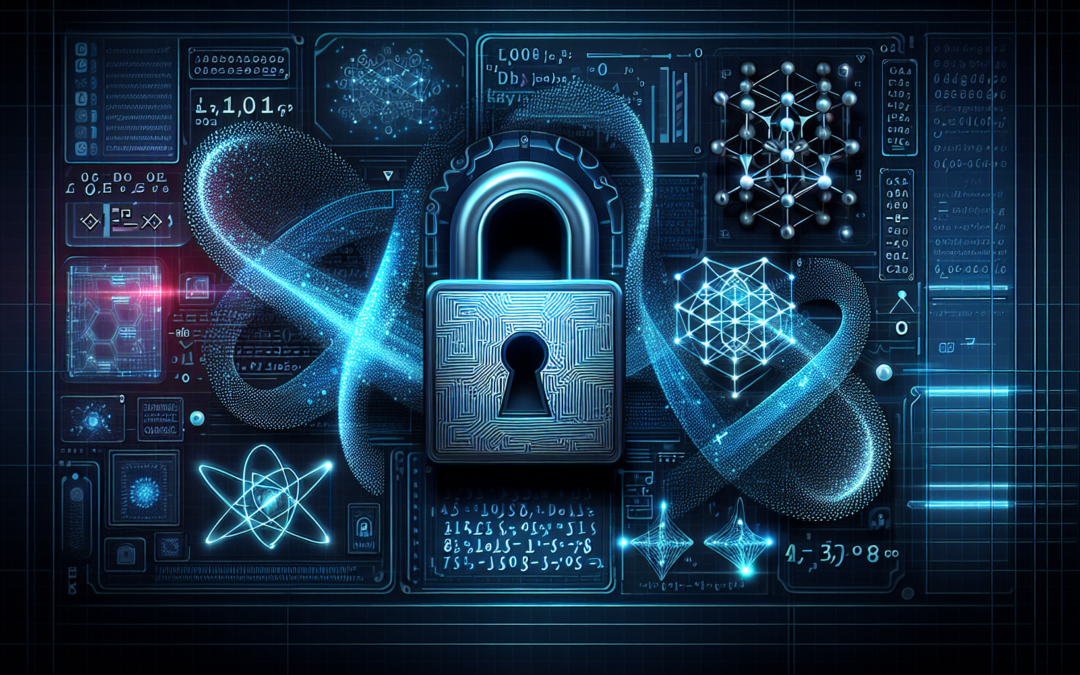“`html
Introduction
The National Institute of Standards and Technology (NIST) has taken a significant step towards enhancing cybersecurity by introducing quantum-resistant encryption tools. This innovation aims to counter the looming threat posed by quantum computers, which have the potential to bypass current encryption methods. The new tools promise to fortify data protection, ensuring that sensitive information remains secure even as quantum computing advances.
Understanding the Threats of Quantum Computing
Quantum computers leverage the principles of quantum mechanics to perform complex calculations at unprecedented speeds. While this technology holds promise for numerous scientific advancements, it also poses critical risks to cybersecurity.
Traditional encryption methods, such as RSA and ECC, rely on the computational difficulty of factoring large numbers—a task that quantum computers can perform exponentially faster than classical computers. As a result, data secured with these traditional methods can become vulnerable once quantum computing reaches maturity.
NIST’s Quantum-Resistant Tools: An Overview
In response to these emerging threats, NIST has unveiled a suite of **quantum-resistant encryption tools**. These tools are part of NIST’s ongoing effort to develop cryptographic standards that can withstand the capabilities of quantum computers.
These algorithms were selected through rigorous evaluation and testing, ensuring they meet the highest standards of security and efficiency.
Implications for IT Infrastructure and Security
As an IT Director or consultant, it’s crucial to understand the implications of NIST’s quantum-resistant tools on various aspects of IT infrastructure and security.
Data Protection
Incorporating these encryption tools will significantly enhance data protection strategies. By adopting **Kyber** and **FrodoKEM** for data encryption and key management, organizations can safeguard their sensitive information against potential quantum threats.
Authentication and Integrity
The **Dilithium** digital signature scheme provides robust mechanisms for authentication and data integrity. This will be particularly beneficial for systems that rely heavily on verifying the authenticity of messages and transactions.
Compliance and Standards
Adhering to NIST’s quantum-resistant standards will also help organizations stay compliant with evolving cybersecurity regulations. This proactive approach can prevent future vulnerabilities and potential legal ramifications.
Implementation Strategies
For IT professionals looking to implement these quantum-resistant tools, several strategies can be adopted:
Conclusion
NIST’s announcement of quantum-resistant encryption tools marks a pivotal moment in the field of cybersecurity. As quantum computing continues to evolve, the need for robust encryption methods becomes increasingly critical. By adopting these new tools, organizations can future-proof their IT infrastructure, protecting sensitive data from the quantum threats of tomorrow.
For more detailed information on NIST’s quantum-resistant encryption tools, you can visit the original news article [here](https://news.google.com/rss/articles/CBMisgFBVV95cUxNbkRQcFFVc0FNazVsVFk4Vk1kUjNSZjB4YlQ2QXhza3A4cEtiMHJ5cWVmY1RiUE1kcHd5M00tdGVHQVhjSDFIeGlyQkdGemxuQmRNMjJvNy1ZZGxuZGZDcnh6ZlZwMlZQeDQtN3NSeEJnV1N0V3c5bVZLZUZuQkdtVEF3b1VjYnNweE9ydnkzckNJeV8wOGxsVEZDejVYYlJZUUZ6TzdaUlZWWVZ4MTVnTDdR0gG3AUFVX3lxTFBxeFVSMmdzSlFOaGRPRmlzSm5uU3BGSEJ4S1M2NVllZW8zc3lwang1amphaVVVb19uTFVLQnZuektZRzlhbGZKT3ZleG5nT0JDdFhuOVFDM1hVeF8wem9NWVNzZ2JBRTBXNktPQWNJd2RIWFlsbmhlcnl6LVRjcmhmSmxYMU9CbnNzemk4NXBqWVZ5ZUNUU0xoaHdJOHhhNVd2XzFJMkNlS2tST0YwVGlnVFdSa19ubw?oc=5).
“`
This blog post aims to educate readers about the implications of quantum computing on current encryption methods and the proactive steps NIST is taking to mitigate these risks. It also provides practical strategies for integrating these new tools into existing IT infrastructures.
